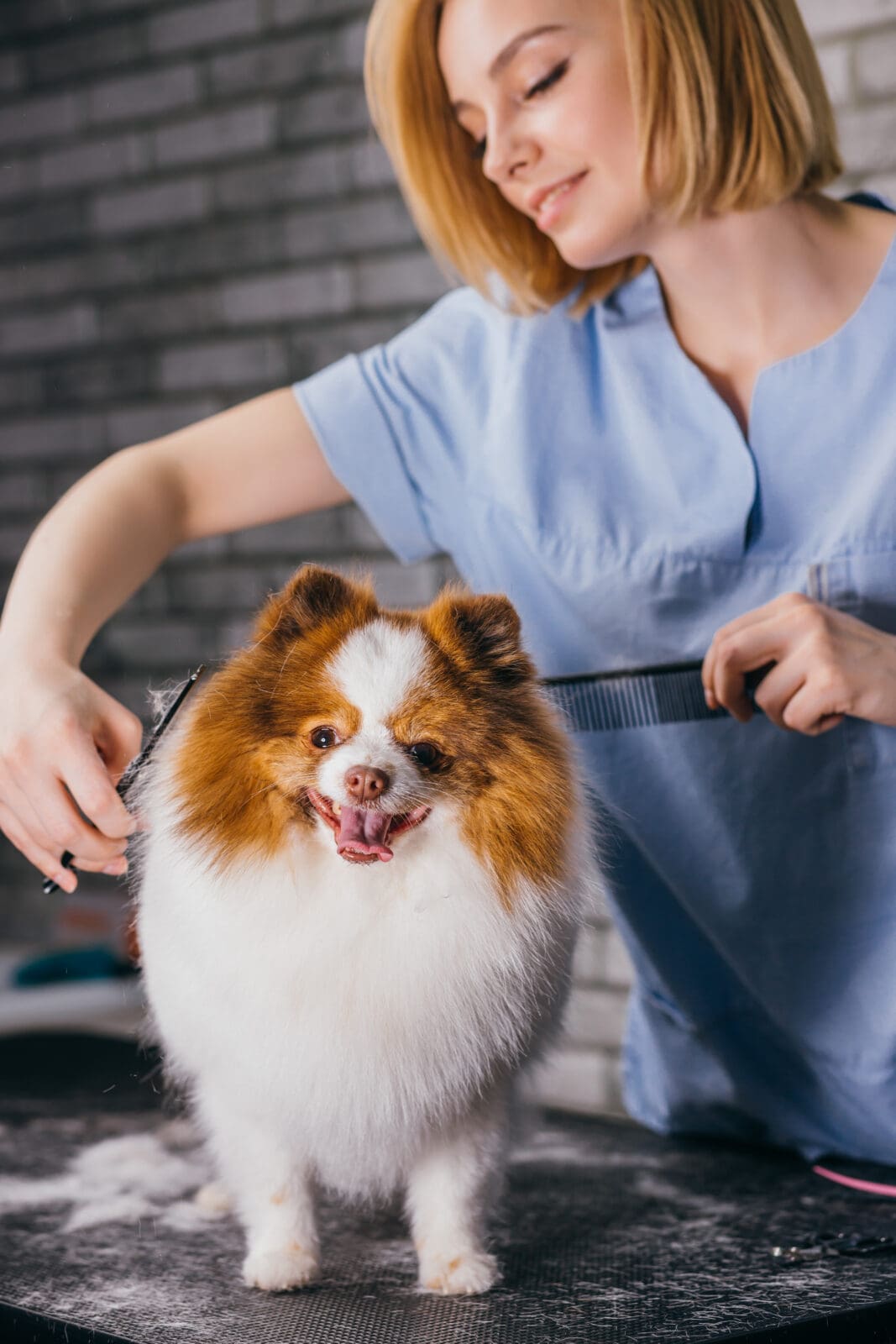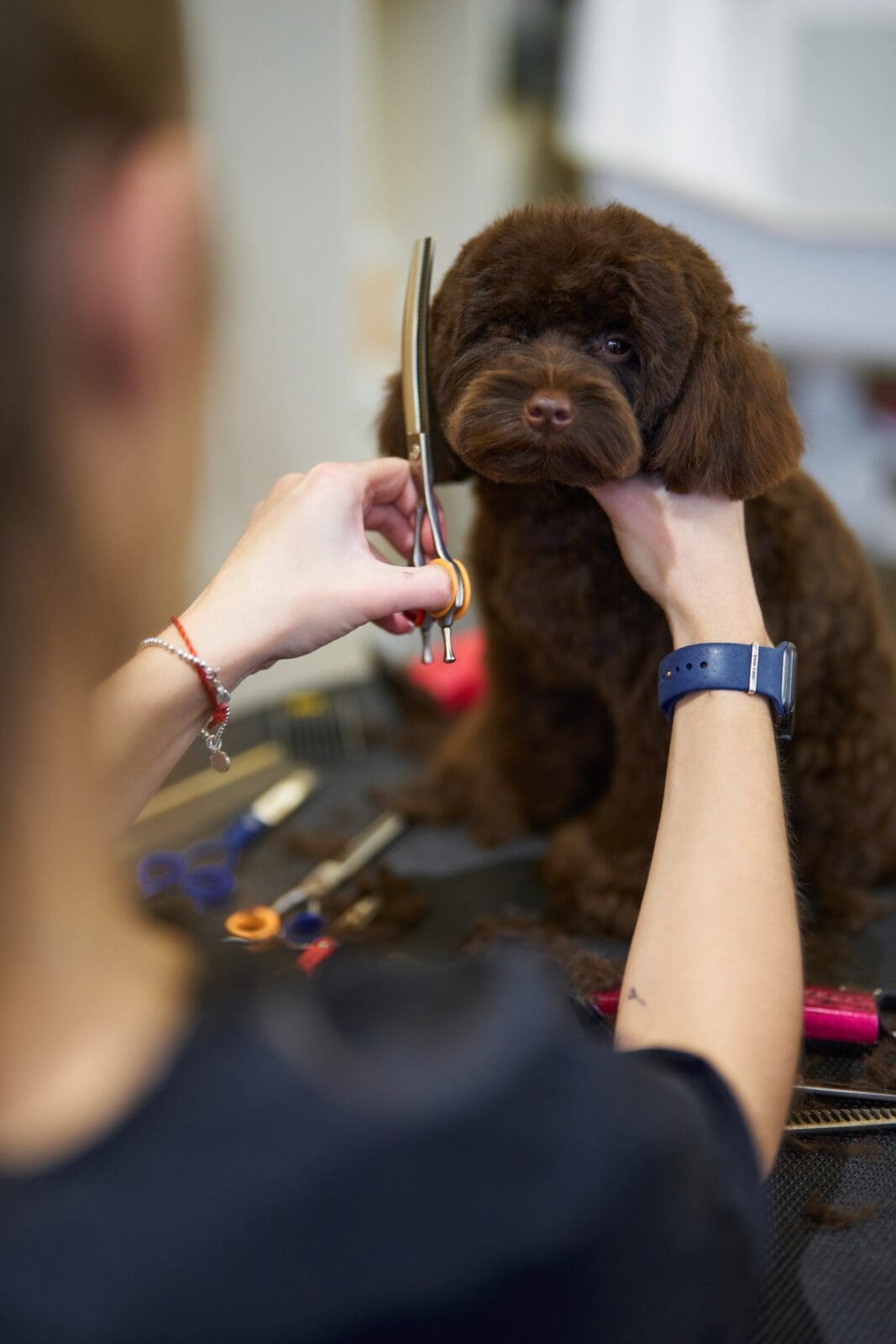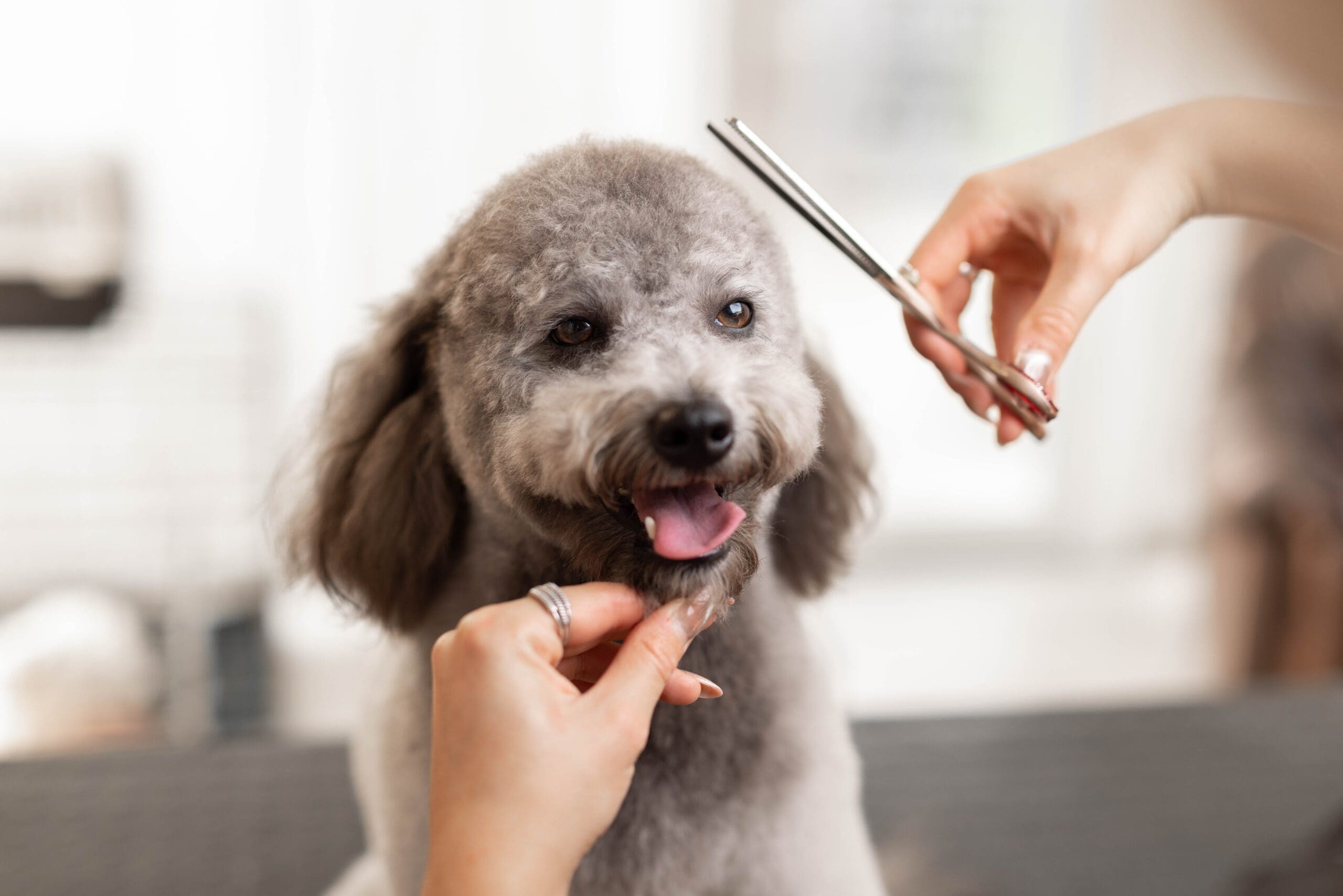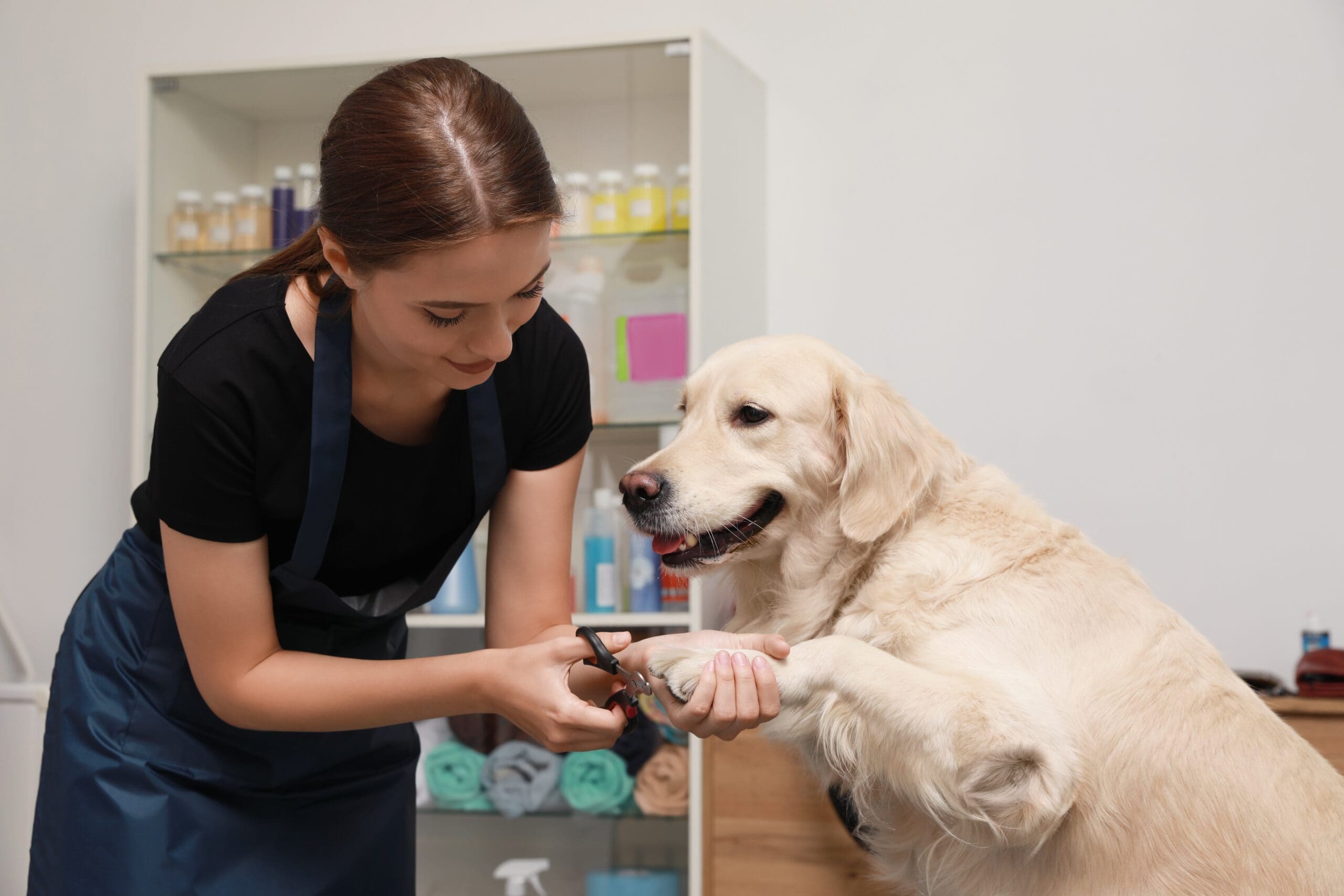Dog Groomer CV Guide
Everything you need to know about getting the perfect Dog Groomer CV
As a dog groomer, you will be responsible for dogs’ hygiene and appearance, which can involve many tasks, including bathing, styling, ear and teeth cleaning, health checks, nail clipping and providing advice to owners. You will need a passion for dogs and the necessary qualifications, skills, experience and personal qualities to be successful in this job.
If you are looking for a job as a dog groomer, you must demonstrate your competencies, which you will typically achieve by sending a CV to the business hiring. Prospective employers will want clear evidence of your experience with animals and customer interaction.
How you write your CV will depend on your background and credentials. However, you should tailor it for each dog groomer job and communicate why you are the perfect match. It should also be professional, well-structured and concise to stand out from other applicants.
In this article, we will provide guidance on how to write a dog groomer CV, what to include, some tips and an example to help you get started. It will hopefully increase your chances of securing an interview and, ultimately, the job.
In this Dog Groomer CV guide
What to include in a Dog Groomer CV
If you are updating an old CV or looking at how to write one for the first time, it is crucial to know what to include to maximise your chances of success. The exact information within your CV will be specific to you and your academic and professional background. However, you will need a framework to help you focus on the areas prospective employers will be interested in.
Your CV should have main sections, such as your contact information, professional summary, education, work experience, key skills, achievements and references. In each section, you want to include your most relevant credentials and align them with the dog groomer job you are applying for.
Knowing where to start when writing a CV and deciding what to include can be daunting. Breaking down your CV into sections can make the task less overwhelming and more manageable. Let us now look at these sections and the information you can include.
Contact information
Your contact information should be at the top of your CV. Here, you should provide accurate details so prospective employers know who you are and how best to contact you.
When including your contact information, add the following:
- First and last name. Do not worry about adding titles or middle names.
- Current or previous job title, e.g. “Dog Groomer” (optional).
- Location, i.e. your town, city, or county. Avoid adding your home address, as it can create privacy risks.
- A professional-looking email address. Avoid using one with nicknames or something too casual.
- An up-to-date phone number where employers can easily reach you.
- Links to an online portfolio showcasing your work (like before-and-after photos of dog grooming) or a personal website (optional).
- Social media pages, only if relevant and professional.
Avoid adding your date of birth, a photo, national insurance number and other personal information, such as marital status, gender, nationality or religion. This information is irrelevant and can lead to bias, discrimination and security risks.
Professional summary
The next section of your CV, after your contact information, is typically your professional summary (i.e. personal statement, executive summary or professional profile). It is a concise overview of your skills, experience, achievements and career goals relevant to the dog groomer job you are applying for.
A well-crafted professional summary is important because it is one of the first things employers will see when reading your CV and can encourage or discourage them from continuing reading. Make it strong and engaging to grab their attention and give them a snapshot of your suitability for the role.
Your professional summary should provide a quick overview of who you are and what you could contribute to the dog groomer position. It should be concise, tailored to each application, and ideally, no longer than five lines. Here are some examples of what to include to capture the attention of readers:
- Job title – begin with your current or desired job title.
- Years of experience – mention your experience as a dog groomer.
- Key skills – highlight your most relevant skills and strengths, including your expertise in grooming techniques (e.g. bathing, clipping, styling, etc.), handling various breeds and ensuring pet comfort and safety.
- Notable achievements – add significant accomplishments or experiences that make you stand out, including certifications (e.g. animal care or grooming) and positive client feedback.
- Career goals – briefly state your career objectives and what you aim to achieve in the role.
- Passion – demonstrate your love for dogs and dedication to providing high-quality grooming and care.
Here is an example of a professional summary for a dog groomer:
“Experienced dog groomer with over 5 years of expertise in grooming and styling dogs of various breeds, ensuring their comfort and safety throughout the process. Skilled in handling nervous pets and delivering exceptional customer service to build lasting client relationships. Certified in canine grooming techniques and committed to enhancing pets’ well-being while maintaining high grooming standards.”
Education
Your CV should have an education section where you detail relevant qualifications and training you have undertaken to demonstrate your expertise. It is vital, as it gives prospective employers the confidence that you have the knowledge and skills needed for the role.
If you are new to the field and have little direct experience, place this section underneath your professional summary. Alternatively, if you have already worked as a dog groomer, you may want to put your work experience first. It depends on your background and preference. The education section of your CV should include qualifications, training and courses relevant to the dog groomer position and be in reverse chronological order, i.e. most recent. Here are some examples of what to cover in this section:
- Have a header titled “Education”.
- Start with your most recent education.
- List any specialised courses or obtained certifications related to dog grooming, e.g.
- Level 2 or Level 3 Diploma in Dog Grooming.
- Professional Pet Grooming Certificate.
- Handling, animal care, first aid or specific grooming courses and skills.
- Mention the qualification, institution, completion date (or present if still studying) and grades (where applicable).
- Include any coursework that is particularly relevant to dog grooming.
- Highlight practical training, apprenticeships, internships or hands-on experience with dogs (where relevant).
- Highlight additional, complementary skills, e.g. business management for running a salon and customer service for interacting with pet owners.
Prioritise education relevant to dog grooming rather than general qualifications, such as GCSEs, unless the job posting details them.
Here is an example of how to structure your education:
City & Guilds Level 3 Diploma in Dog Grooming.
Pet Grooming Academy, London.
Completed: June 2022.
- Learned advanced grooming techniques, breed-specific styling, and hygiene standards.
- Trained in handling various dog breeds, including nervous or reactive dogs.
Work experience/employment history
The following section, which you can add after your professional summary or education, is your work experience (employment history). Here, you will showcase your professional background, highlighting your previous roles and responsibilities, the skills you have developed, and the impact you have made in previous jobs.
Adding relevant and tailored work experience to your CV is crucial because it demonstrates your ability to perform the role, shows your career progression and helps potential employers assess your suitability for their team. As dog grooming requires specific competence, they will want to see evidence of your capabilities in handling various dog breeds and experience in various dog grooming techniques, safety, hygiene and customer service.
When adding your work experience to your CV, include it in reverse chronological order (most recent first) and make sure it is relevant or demonstrates transferable skills. You can add relevant paid work experience or voluntary positions, and here are some pointers on what to include:
- Job title: Clearly state your job title, e.g. “Dog Groomer”.
- Employer/organisation name: Name of the employer or organisation you worked for or add self-employed if you have had a dog grooming business.
- Location: Town, city or county.
- Dates of employment: Specify employment start and end dates (month/year). If you are currently employed, indicate that by stating “Present”.
- Job description: Briefly summarise your role and responsibilities, and try to focus on what you accomplished. Highlight any specific duties and skills relevant to dog grooming. Aim for three to five bullet points, and use action verbs to describe your tasks. Here are some examples:
- Provided professional grooming services for 15–20 dogs weekly, ensuring breed-specific styling and pet comfort.
- Built strong relationships with pet owners, advising on coat care and maintenance.
- Achieved high customer satisfaction, with a 95% repeat client rate.
- You can add achievements and skills to your work experience section or have separate sections, which we will look at next.
Key skills and achievements
Key skills are the abilities or expertise that allow someone to perform tasks effectively, developed through experience, education or practice. Adding skills directly relevant to the dog groomer job you are applying for helps employers quickly identify your qualifications and suitability. It assures them that you have the necessary knowledge and experience to match their requirements, which can increase your chances of being selected for an interview.
There are two main categories of skills, hard and soft, which are valuable and often complement each other. Include a mix of both in your CV to show employers you are the best fit.
- Hard skills – are specific, teachable abilities that can be measured and defined and are often acquired through education, training programs or on-the-job experience. Some examples of hard skills for a dog groomer may include:
- Proficiency in grooming techniques (e.g. scissoring, clipping and breed-specific cuts).
- Use of grooming tools and equipment.
- Dog handling and care expertise.
- Knowledge of hygiene and safety standards.
- Soft skills – interpersonal and social skills that are more subjective and harder to quantify but are equally important. Some examples of soft skills for a dog groomer may include:
- Excellent communication and customer service.
- Time management to handle multiple appointments efficiently.
- Patience and empathy, especially for handling anxious dogs.
- Problem-solving skills for unexpected situations, like calming distressed dogs.
It is important to note that some organisations use Applicant Tracking Systems (ATS), which scan for specific keywords in candidates’ CVs. Therefore, including these in your CV can help your application pass through the ATS filter.
You can also incorporate achievements into your skills section if they directly demonstrate your mastery of a particular skill. For example, you could list a skill and pair it with a brief achievement that proves your expertise. We will look at how to focus on your achievements later.
Other information
We have covered some of the main sections to include in your CV. However, there may be others and additional information you want to add to help it stand out to potential employers. Here are some examples you may want to consider:
- Volunteer work – include any relevant volunteering you have undertaken to demonstrate your commitment to animal care and welfare, e.g. at animal shelters, dog rescue centres, or even caring for other people’s dogs in your community.
- Hobbies and interests – showcase your personality by mentioning relevant hobbies like dog health and well-being, pet photography or participation in dog shows, as it makes your CV more relatable and engaging.
- Professional development – include any certifications, training programs, workshops, seminars or conferences you have attended that are relevant to dog grooming. Even online courses and reading about the subject can help.
- Professional associations – include any memberships in relevant professional associations, such as the British Dog Groomers Association (BDGA) or the Kennel Club.
- Testimonials – where relevant, you could provide positive feedback or testimonials from clients, colleagues or employers that showcase your effectiveness and expertise.
- Languages – if you can communicate in multiple languages, mention this (especially if relevant to client interactions).
While adding more sections can showcase your dedication to the dog grooming profession, try not to add too many, as it can make your CV look cluttered. Only include additional sections if they add value and help grab employers’ attention.
References
References on a CV are individuals (referees) who can vouch for your skills, experience, and character, such as a former employer, supervisor, colleague or even a client. They provide a way for potential employers to verify your information and gain insights into your work ethic and reliability. References are crucial because they add credibility to your application and make you stand out as a trustworthy candidate.
The reference section is typically the last in your CV, and you have two options regarding content. First, look at the job description to see if it asks for specific reference details at this stage. If it does not, you can add a short statement, “References available upon request”. If the job posting asks for details, you will need to provide the following information:
- Name of the referee, e.g. Joe Jones.
- Their position at the time, e.g. Manager.
- Organisation name, e.g. Pet Spa.
- Email, e.g. joe.jones@happypaws.co.uk.
- Phone, e.g. 01234 567890.
- Relationship to you, e.g. supervisor, mentor, manager, etc.
Before you add your references to your CV, you should ask their permission first and ensure their information is current to enable prospective employers to contact them easily.
Tailoring your references to highlight your skills with dogs and client service will strengthen your application.
Tips for writing a Dog Groomer CV
While we have looked at some of the sections and information to include, here are also some general tips to help you avoid common mistakes and craft an exceptional CV:
- Tailor your CV to the job – read the job description carefully and highlight the qualifications, experiences, skills and achievements most relevant to the specific job. Reflect on your credentials and align them with the employer’s requirements. Incorporate similar language they use to show you have attention to detail.
- Keep it concise and engaging – your CV should be an introduction, so be careful not to go into too much detail or make it too long. Keep your CV around two pages, focus on relevant information and avoid adding unnecessary details.
- Never lie – always be honest on your CV, and do not try to embellish or mislead, as it can lead to negative portrayals and even serious consequences if the employer finds out. It should reflect your credentials.
- Use action verbs – start each bullet point with strong action verbs like “inspected”, “monitored”, “implemented”, “delivered”, or “achieved” to make your accomplishments stand out. Avoid phrases such as “hardworking” or “team player”, as these are overused and lack specificity.
- Use professional and consistent formatting – you can help your CV stand out by:
- Using a clean, professional layout with clear sections, headings and bullet points.
- Using professional, simple and clear language, avoiding slang or overly casual expressions.
- Using the same tense throughout your CV. Typically, past tense for previous jobs and present tense for your current role.
- Avoiding excessive use of colours and fonts.
- Sticking to a simple font like Arial, Calibri or Times New Roman and consistent size, e.g. 10-12 points. Avoid fancy fonts and unprofessional-looking ones.
- Ensuring your CV has adequate spacing to make it more visually appealing.
- Avoiding using photos, as it can distract and lead to bias.
- Using a digital format where possible. Save and send your CV as a PDF to ensure the formatting stays intact when viewed on different devices.
- Check your CV before sending it – spelling and grammatical errors can create a bad impression. Ensure you proofread your CV thoroughly before sending it. You can also use a spelling and grammar checker or ask a family member, friend or colleague to review your CV and give feedback.
Employers will be able to separate the candidates who have carefully written their CVs from those who have not. Following these general tips can help you write a well-crafted CV that stands out from the rest.

Focus on achievements
Achievements are specific accomplishments or successes that showcase your skills, expertise and passion for dogs while highlighting measurable results or unique contributions. Instead of just listing your previous responsibilities, achievements highlight what you have done to add value, solve problems or improve results in your previous roles.
Including achievements is essential, as they make your CV stand out by showing tangible evidence of your success and helping prospective employers understand your impact in previous roles. Also, if you have qualifications, skills and experience similar to other candidates, adding stand-out achievements can differentiate you from others applying for the same role.
Where you add your achievements to your CV is up to you, but you can include them in your work experience, add them to your skills or have a separate section. The latter may be preferable if you have had many accomplishments in dog grooming. Here are some pointers to help you focus on your achievements:
- Think about key achievements and where you have made improvements, solved problems or received positive feedback. For example:
- Did you handle difficult dogs with ease?
- Have you specialised in any areas, such as show dogs or rare breeds?
- Did you introduce new techniques or services that clients loved?
- Did you contribute to the success of a dog show or competition?
- Have you increased customer satisfaction or bookings?
- Have you received recognition, awards or professional grooming certifications?
- Use numbers, percentages or other metrics to quantify your achievements and make them more concrete and compelling. For example:
- “Groomed over 30 dogs per week with a consistent 5-star client rating”.
- “Increased repeat bookings by 25% through excellent customer service”.
- Tailor your achievements to the role and focus on those that align with the job description. For example, highlight satisfaction scores or positive reviews if the role requires customer service.
- Place the most impressive and relevant achievements at the top of each section to ensure recruiters see them first and make a strong initial impression.
- Use action-orientated language and start each bullet point with a strong action verb to describe your accomplishments and create an impactful impression. For example, use words like “implemented”, “improved”, “achieved”, “managed”, “increased”, “reduced”, “developed,” etc. You can use things like “assisted with” if you are new to the field.
Even small things count as achievements. If you learned a new technique or helped a nervous dog feel more comfortable, that is something to be proud of. Focus on what you can do, and show your enthusiasm for learning more to increase your chances of securing an interview.
Describe your experience
Experience on a CV refers to the roles and responsibilities you have had in the field that demonstrate your skills and expertise. It is where you highlight your previous jobs, internships, apprenticeships or volunteer work related to dog grooming, emphasising what you have learned and achieved in those positions. It helps employers clearly understand your previous roles, responsibilities and accomplishments, helping them evaluate your suitability for the position.
How you describe your experience on your CV is crucial, and you will want to tell the reader why you are the best fit for the dog grooming position. You will cover this in two main sections – your professional summary and work experience/employment history. Let us recap:
- Professional summary – here, you should describe your experience, skills and accomplishments concisely. For example, you will tell the reader how many years of experience you have in dog grooming and your main areas of expertise.
- Work experience – this is the main section where you will describe your experience. Here, you will list job titles, employers, dates of employment and key responsibilities. You may also include achievements and skills relevant to the role you are applying for, using clear, action-oriented language and measurable results when possible. Remember to keep it concise and tailored to the position. You can also describe any volunteering experience working with dogs and the skills you gained from each role.
If you have limited direct experience in dog grooming and/or are looking to apply for your first role in the field, you can still craft a compelling CV by focusing on transferable skills, relevant experiences and a passion for dog care. Here are some ways you can describe your experience in this situation:
- Highlight transferable skills – identify skills from previous roles, education or volunteer work that align with dog grooming. For example:
- Customer service and interpersonal skills, e.g. interacting with customers.
- Time management, e.g. managing appointments.
- Attention to detail, e.g. tasks that require precision and care.
- Physical stamina, e.g. lifting or handling.
- Emphasise relevant activities – mention any relevant experience, even if it is not professional, such as:
- Grooming your own pets or helping friends and family.
- Volunteering at animal shelters or pet rescue organisations where you handled or cared for animals.
- Assisting at pet salons, vet clinics or during grooming workshops.
- Extracurricular activities – include any extracurricular activities and personal interests relating to dogs, such as participation in dog sports, pet sitting, dog walking, dog clubs, etc.
- Emphasise training and education – include any courses, workshops or certifications you have completed (even if still in progress) and any seminars, conferences or other relevant events attended.
- Highlight essential qualities – include personal attributes important for dog grooming, like patience, empathy, resilience and adaptability. For example, “Demonstrated patience and empathy while handling animals in stressful situations”.
- Demonstrate enthusiasm and passion – write a professional summary emphasising your relevant education, transferable skills and commitment to the field. For example: “Passionate animal lover with a strong interest in starting a career in dog grooming. Highly motivated to learn and deliver exceptional care to pets while ensuring their comfort and well-being. Dedicated to building skills and providing outstanding customer service in a professional grooming environment”.

Tailor your CV to the Dog Groomer position
We have mentioned tailoring your CV many times, as it is crucial. It demonstrates to prospective employers that you have paid attention to the job posting and have taken the time to understand their needs and values. It also shows that you are enthusiastic about the role and are passionate about dog grooming.
Tailoring a CV means customising it to align with the job you are applying for and making targeted adjustments to show that you are the perfect fit. It involves emphasising your most relevant skills, experiences and achievements that match the employer’s requirements instead of sending out a generic CV. Here are some tips to help you customise your CV:
- Study the job description – identify the skills, experience and qualifications the employer wants and what they value most, e.g. breed-specific skills, client satisfaction, efficiency, and competence in certain grooming techniques. Look for keywords like “pet grooming,” “customer service”, “animal care”, or “handling difficult dogs”, and use similar language in your CV.
- Find out about the employer – do some research online and look at their website and social media pages. Identify their goals, values, ethos and mission statement and see what is in their latest news. You can pick out specific information to incorporate naturally into your CV and show them how you would fit into their team.
- Customise sections of your CV – there are several ways to do this, e.g.:
- Rewrite your professional summary to focus on how you meet the job’s specific needs. You can also mention the company name and role.
- Customise the bullet points in your work experience section and focus on relevant roles and responsibilities from your previous jobs. Use the same language as the job description when possible, e.g. if the job emphasises handling anxious pets, mention any experience or techniques you have developed.
- Use specific achievements relevant to the role, e.g. if the job posting details client satisfaction, highlight related achievements. For example, “Achieved a 98% client satisfaction rate through exceptional grooming services”.
- Match your skills section to the keywords in the job description and focus on those most relevant to the position, e.g. if the job requires experience in handling difficult dogs, highlight your proficiency in that area.
- If the job description mentions specific certifications, training or professional memberships, include these in your CV where relevant.
- Use keywords – as stated, some organisations use applicant tracking systems (ATS) that filter applications based on keywords. As you read through the job description, highlight any keywords in the job posting and incorporate them in your CV where relevant. It increases your chances of passing through these filters and getting an interview.
- Do not forget to tailor your cover letter – customise your cover letter for each application, highlighting specific experiences, achievements and skills that align with the role. Use examples from your CV to support your claims and detail what makes you a perfect fit for the dog groomer position.
Tailoring a CV creates a positive first impression and helps you stand out, which can be a significant advantage in landing an interview and, hopefully, the job.
Good luck!



